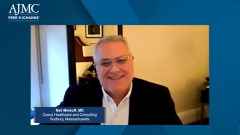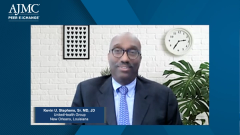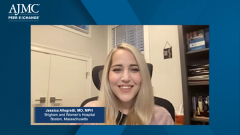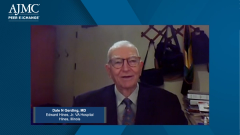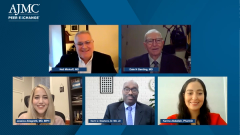
Identifying Treatment Goals for Recurrent CDI
A panel of experts review treatment goals and assessing response in patients with recurrent clostridium difficile infection.
Episodes in this series

Transcript:
Neil Minkoff, MD: Not to ask a naive question, but I want to make sure that everybody listening to our discussion is on the same page. How do you define the goal of treatment for recurrent CDI [Clostridioides difficile infection]? It seems like a naive question. It seems like the answer should be cure, but I don’t think it’s that simple. Dr Gerding, can you start that? Then we can pull some other folks in to discuss how you measure success in treating recurrent C diff.
Dale N. Gerding, MD: It’s really a 2-step process. You have acute symptoms as you get a recurrent episode. The first goal is to get the symptoms resolved in the patient, and that’s largely still an antibiotic function. For most patients, their first step in treatment is antibiotic treatment. Some antibiotic treatments, like fidaxomicin, have a lower recurrence rate, so that’s one approach. Another approach is to use an extended pulse and taper regimen of fidaxomicin, sometimes called EXTEND, basically extending the treatment by giving it every other day for a longer period. Those treatments treat the acute episode and try to reduce the chance of recurrence.
Most patients are now being treated with what we call add-on or adjunct therapy to antibiotics, which means something else is administered. One of those things is bezlotoxumab, which is a monoclonal antibody targeted at the toxins. That’s available. We also have microbiome replacement therapy available. It’s not yet FDA approved, but clearly Dr Allegretti can talk about that much better than I can. We also have a number of other products in research clinical trials that look very promising in terms of trying to replace the microbiota, or in one instance, replace the C diff organism itself. The goal of therapy is obviously to stop the symptoms and not let them come back again.
Neil Minkoff, MD: Would any others like to chime in?
Jessica Allegretti, MD, MPH: I completely agree. I usually tell patients that the window of recurrence is generally considered to be 8 weeks. After whatever therapy we’ve started, we’re going to follow you closely for 8 weeks. If you make it to that 8-week point and you don’t have diarrhea and you’re feeling better, we essentially consider you cured, and then hopefully you can move on with your life at that point.
That being said, I also counsel patients extensively about post-infection irritable bowel syndrome, which affects anywhere between 30% and 40% of patients, meaning the C diff might be gone, but their bowel movements might not be completely normal. They may have mushier stools or more frequent stools than they had before all of this. Often these patients will continue to follow with me a little more long term once the C diff is gone to manage the sequelae of C diff that remain once the C diff is gone. The overall treatment goal is cure by 8 weeks, confirming that the C diff is gone, and then long-term management of their bowel symptoms and improvement overall of their quality of life. That’s the overarching goal.
Transcript edited for clarity.
Newsletter
Stay ahead of policy, cost, and value—subscribe to AJMC for expert insights at the intersection of clinical care and health economics.

